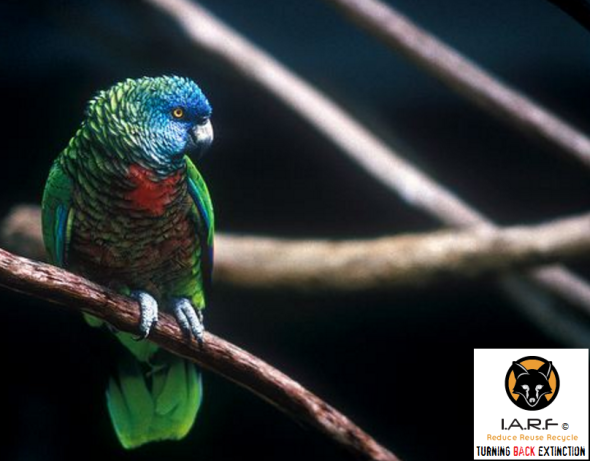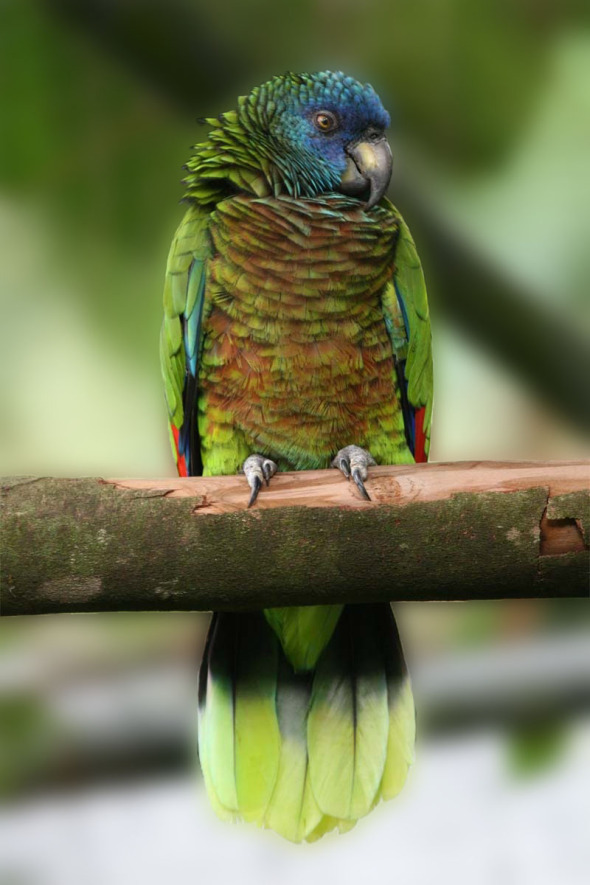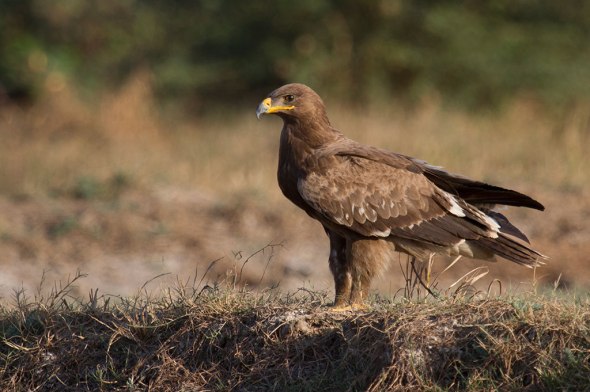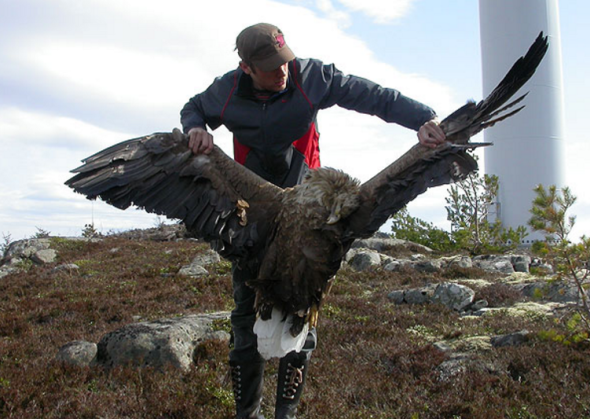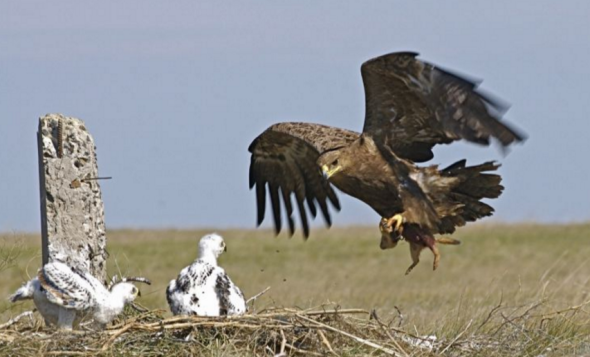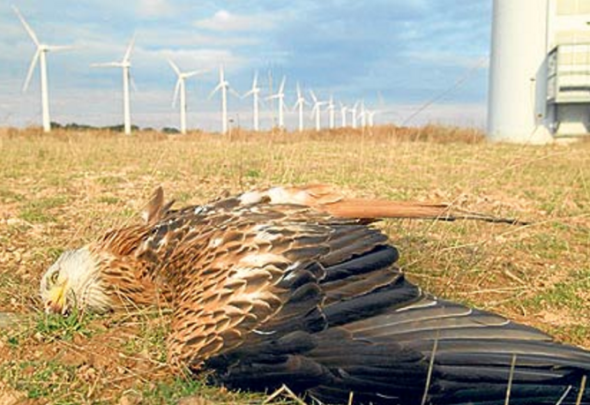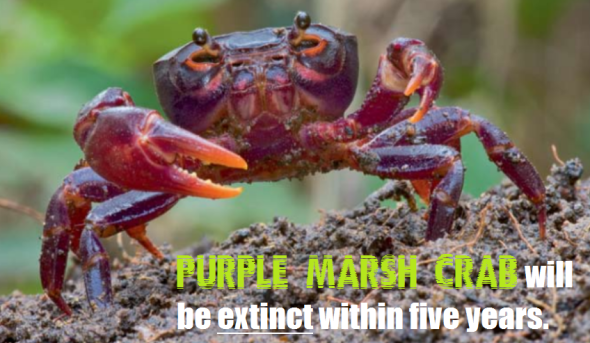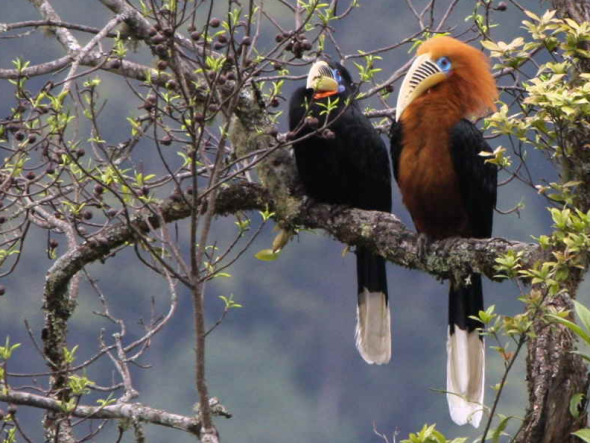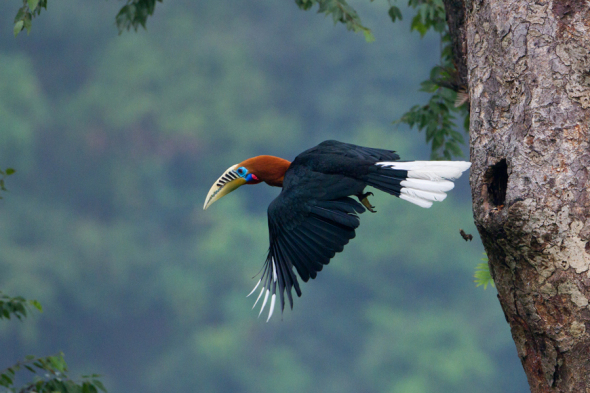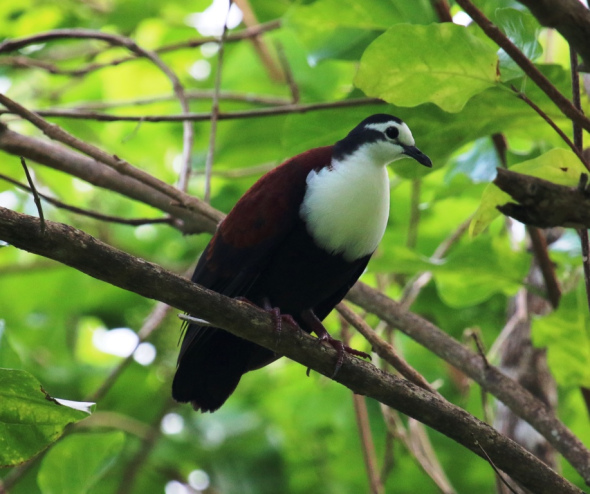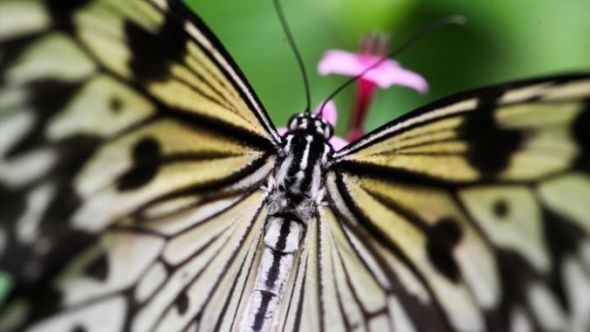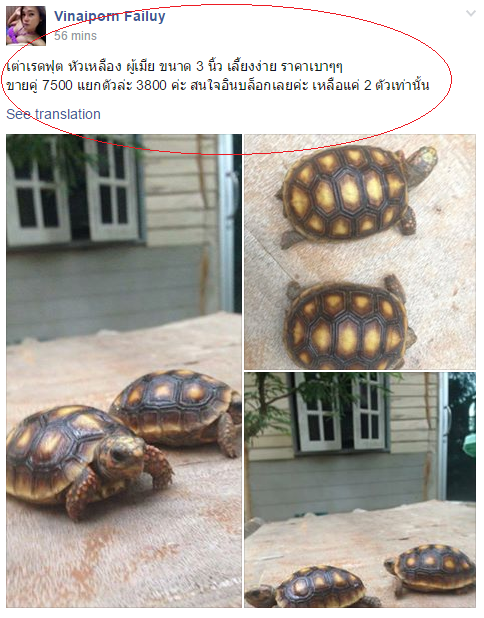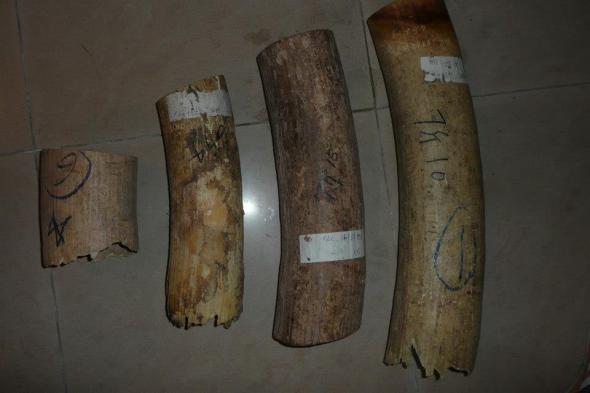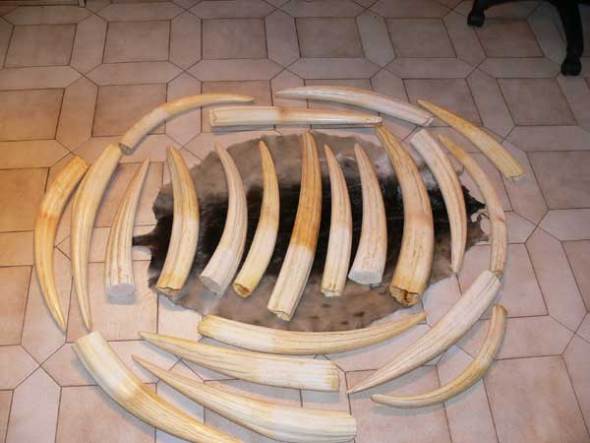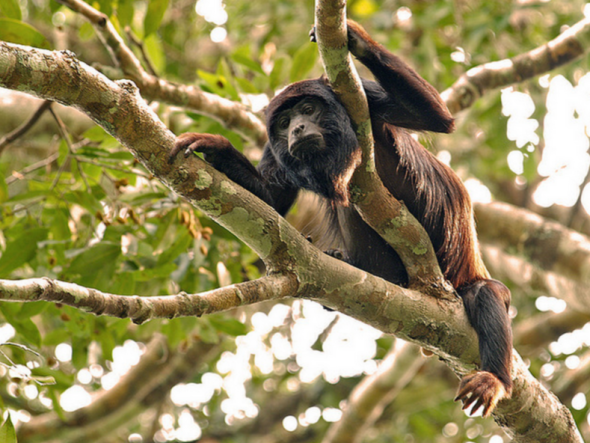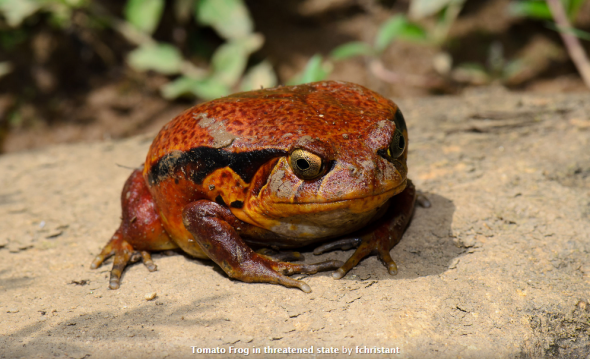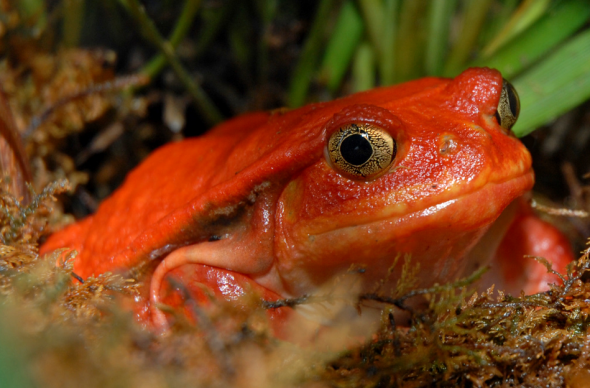Endangered Species Friday | Bubalus mindorensis | Asia’s Next Extinction!
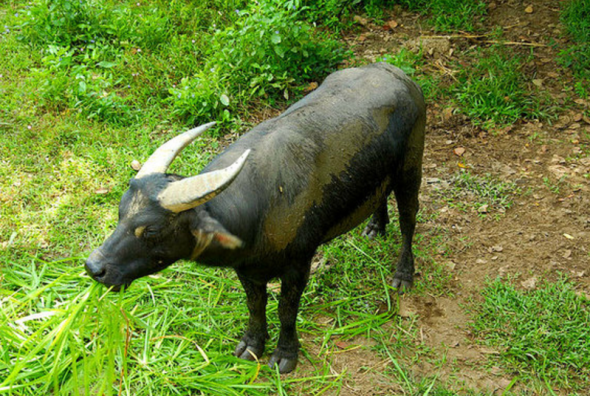
Endangered Species Friday | Bubalus mindorensis
This Friday’s (ESP) Endangered Species Post, I’m touching on a very undocumented species of buffalo that is so endangered - its extremely likely the species will go extinct within the next ten years maximum. (Photographer unidentified).
Listed as (critically endangered) the species was primarily identified back in 1888 by French born Dr Pierre Marie Heude (25 June 1836 – 3 January 1902) whom was a French Jesuit missionary and zoologist. Born at Fougères in the Department of Ille-et-Vilaine, Heude became a Jesuit in 1856 and was ordained to the priesthood in 1867. He went to China in 1868. During the following years, he devoted all his time and energy to the studies of the natural history of Eastern Asia, traveling widely in China and other parts of Eastern Asia.
Endemic to the Philippines B. mindorensis first came to the attention of environmentalists when conservationists began studying the Mindoro Water Buffalo in the early 1940’s of which they found insufficient data relating to the species. Unfortunately from 1986-1996 the species was then suddenly re-listed as (endangered).
Yet the Tamaraw had been known to overseas and native conservation scientists for over THIRTY YEARS of which today we’re now seeing a possible new extinction occurring within the Philippines. How is this possible, when scientists knew about the status of the species, why hasn’t a single zoo removed small populations to house in protective breeding captivity for later reintroduction into the same habitat, or new pastures?
Meanwhile from the year 2000 to 2008 the species was again (re-listed from endangered to critically endangered). Today the Tamaraw is now bordering complete extinction within the wild, and from what we know there is ‘possibly’ no protective captivity projects anywhere around the globe to preserve the species for future reintroduction in the wild. We do hope that we’re wrong?
From what we know based on the last census from 2013 (three years ago) there was noted within the wild only 105 mature individuals remaining. This equates to exactly 105-210 mature individuals (estimate). Within the past three years its very likely we have probably lost half of the remaining populations known, which could mean there is only 52-205 mature individuals remaining within the wild to date.
The species is not known to be fragmented, however populations are still declining. The major threat was once identified as hunting, although ‘allegedly’ isn’t known to be a threat now?. As a scientist and environmental crime CEO I find this very difficult to comprehend, due to the amount of horned ungulates which are being located throughout South East Asia. I must state though: my environmental crimes officers as yet haven’t located any Tamaraw horns or trophy heads.

Image: Tamaraw. Credits: Ruisu Fang.
Formerly, Tamaraw were found across the whole of Mindoro from sea level to the high peaks (to over 1,800 m), inhabiting open grassland or forest glades, thick bamboo-jungle, marshy river valleys, and low to mid-elevation forests. The species is currently confined to a few remote areas over 200 m, and is most often recorded in secondary forest and mixed forest/grassland.
Tamaraw are largely solitary, although females occur with offspring. Males and females occasionally associate temporarily throughout the year, which is similar to other bovines species, such as African buffalo, banteng and gaur. The solitary nature of the species is probably an adaptation to forest habitats, where large groups would prove to be a hindrance. Tamaraw feed primarily on grasses, as well as young bamboo shoots, in open grasslands, resting within tall grasses or dense forest. Although formerly diurnal, Tamaraw have become largely nocturnal due to human encroachment and disturbance.
“WE’RE LOSING THEM, AND FAST”
I do find it quite disheartening to know that the Philippines “national animal symbol” isn’t really being preserved or even protected from nearing complete extinction, although there are some projects out there that are helping to save the species from extinction, the problem is of course, as usual, funding!. One would think that a country that’s so wealthy, and a country that has introduced so many animal, wildlife and environmental laws would at least be fighting to protect the tamaraw. From what I have read and heard from the locals - they are trying their utmost hardest, unfortunately not everyone thinks the same as many kind Filipinos.
THREATS
The main current threat to the Tamaraw is habitat loss due to farming by resettled and local people, with a high human population growth rates in and around its remaining habitat. In some areas, fires set for agriculture are a threat to the species’ habitat. Cattle ranching and farming activities pose a number of threats, including the risk of diseases spreading to the Tamaraw from livestock and burning of pastures leading to a reduced number of palatable grass species.
Historically, Tamaraw were hunted for both subsistence and sport, which led to a period of drastic decline in numbers of individuals and populations. Hunting was carefully regulated prior to World War II, but since then a growing human population, logging operations, ranching, and widespread availability of firearms on Mindoro have caused a dramatic decline in numbers.
Since the 1980s, sport hunting has reduced due to a decline in the Tamaraw population, closure of nearby ranches, and more intensive patrolling and awareness activities since the establishment of the protected area. International trade in this species or its derivatives has not been reported. Although protected by law, the illegal capture and killing of this species continues.
While its currently “illegal to poach or hunt” the species “we believe some are still being poached within the Philippines to provide horns to both China and Viet Nam”. As yet there is NO EVIDENCE to back these claims up, however I.A.R.F.A environmental crimes officers have located in Viet Nam a lot of ‘counterfeit Rhinoceros horn’, which when analysed, has proven to us the horn[s] most certainly aren’t from rhinos, but from a buffalo species. So this area of the counterfeit rhino horn trade still needs intensive investigation.
The current plight of the tamaraw is not looking good, and from our own investigations and third party environmental investigations relating to the species - extinction is very likely to occur in around five to ten years (if that).
“THE TAMARAW IS ASIA’S NEXT EXTINCTION”
Thank you for reading.
Dr Jose Carlos Depre. PhD. MEnvSc. BSc(Hons) Botany, PhD(NeuroSci) D.V.M.
Environmental, Botanical & Human Scientist.
Endangered Species Friday: Amazona versicolor
Endangered Species Friday: Amazona versicolor
This Fridays Endangered Species Post (ESP) I touch up briefly on the St Lucia Amazon as the species is commonly known. Image credits Philippe Feldman
The species was identified back in 1776 by Dr Philipp Ludwig Statius Müller (April 25, 1725 – January 5, 1776) who was a German zoologist. Dr Statius Müller was born in Esens, and was a professor of natural science at Erlangen. Between 1773 and 1776, he published a German translation of Linnaeus’s Natursystem.
The supplement in 1776 contained the first scientific classification for a number of species, including the dugong, guanaco, potto, tricolored heron, umbrella cockatoo, red-vented cockatoo, and the enigmatic hoatzin.
Dr Muller was also an entomologist. Müller died in Erlangen. He is not to be confused with Salomon Müller (1804–1864), also an ornithologist, or with Otto Friedrich Müller. Note that the family name is actually spelled without the umlaut, then and now.
The Saint Lucia Amazon is listed as (vulnerable) which was nearing (endangered), native to Saint Lucia. From 1988 the species was first listed as (near threatened), however, unfortunately from 1994-2016 the species was re-listed as (vulnerable). Locals commonly refer to the species as the; Saint Lucia Amazon, or the Saint Lucia Parrot.
Populations are considered to be extremely low, although now allegedly increasing. A decade ago the then current known population rate stood at some 350-500 individuals, this generally equates to some 230-330 ‘mature individuals’. This number was actually considered quite low for any species which technically should see the St Lucia listed as (critically endangered).
St Lucia Amazon Parrot is situated on the island of St Lucia in the eastern Caribbean where it is known locally as ‘Jacquot’. The Government of the island became aware of the plight of its endemic parrot population in 1975 when Durrell first became involved with St Lucia, and the Trust was asked to help by starting a captive breeding programme for the species at its Jersey headquarters. In 1989 a pair of captive-bred parrots returned to their native home with the Prime Minister of St Lucia.
The St Lucia Amazon’s natural habitat is subtropical or tropical moist montane forest, diet consists of fruit and insects, of which clutch size is around 3-4 eggs. The species is threatened by habitat loss. St Lucia Amazon species have declined from around 1000 birds in the 1950s to 150 birds in the late 1970s. At that point a conservation program began to save the species, which galvanized popular support to save the species, and by 1990 the species had increased to 350 birds.
Although the population in Saint Lucia is small it is still expanding. To date after conservation efforts increased on the island of St Lucia due to destructive storms and hurricanes populations were increased to some 2,100 mature individuals. Please see video below.
The story of this birds salvation from the brink of extinction (including the influence of conservationist Paul Butler) is told in Chapter 7 of the 2010 book “Switch: How to Change Things When Change is Hard” by Chip & Dan Heath.
Listed on Cites Appendix I and II, below I’ve included a list of identified threats associated with the St Lucia Amazon Parrot.
MAJOR THREATS
The human population of St Lucia is growing at a considerable rate, increasing pressure on the forest and resulting in habitat loss. Selective logging of mature trees may significantly reduce breeding sites, and hurricanes, hunting and trade pose further threats. There have been recent efforts to lift the moratorium on hunting within forest reserves, which would seriously threaten this species.
Image: St Lucia Amazon
Its truly wonderful to know that conservation efforts have brought this species back from the brink of near extinction. The Durrell Wildlife Conservation Trust is one trust that I admire, and have donated many hundreds of euros to since I was a teenager. Durrell have worked wonders across the globe working to help primates, frogs and countless birds, not forgetting many other animals..
The Durrell Wildlife Conservation Trust is one NGO that I myself will be leaving money to in my will. Why? Because they deserve the money for the work they put into preserving our flora and fauna. You can donate to the Durrell Wildlife Conservation Trust here: https://www.durrell.org/wildlife/shop/donation/
Thank you for reading and have a nice day.
Dr Jose C. Depre PhD. MEnvSc. BSc(Hons) Botany, PhD(NeuroSci) D.V.M.
Chief Environmental and Botanical Scientist.
Follow me on Twitter here: https://twitter.com/josedepre11
Facebook: https://www.facebook.com/InternationalAnimalRescueFoundationAfrica/?fref=ts
Endangered Species Friday: Aquila nipalensis | Wind Farms Pushing Steppe Eagle into Extinction?
Endangered Species Friday: Aquila nipalensis
This Fridays (ESP) - Endangered Species Post is dedicated to the A. nipalensis, commonly known as the Steppe Eagle, identified back in 1833. Image credit: Kartik Patel
The Steppe Eagle was formally identified by Dr Brian Houghton Hodgson (1 February 1800 or more likely 1801 – 23 May 1894) was a pioneer naturalist and ethnologist working in India and Nepal where he was a British Resident. He described numerous species of birds and mammals from the Himalayas, and several birds were named after him by others such as Edward Blyth.
Dr Brian H. Hodgson was a scholar of Tibetan Buddhism and wrote extensively on a range of topics relating to linguistics and religion. He was an opponent of the British proposal to introduce English as the official medium of instruction in Indian schools. Had Dr H. Hodgson not introduced English into the many Indian schools, its very likely very few Indian citizens would today know how to speak the English language.
A. nipalensis is listed as (endangered), although its likely the predatory eagle will soon be relisted as (critically endangered), should conservation efforts not improve the current status of this remarkable bird of prey, however this particular bird is somewhat of a mystery.
The major reason why this species is listed as (endangered) which was only recently, is primarily due to wind farming of which birds are reported to fly directly into large structural turbines, which unfortunately, results in their death, or serious injury. Birds that are rescued suffering serious trauma are rarely released back into the wild, or make a full recovery.
From 1988 to 2000 the species was listed as (lower risk). Then from 2003 to 2014 the species remained at (least concern). A risk assessment conducted last year (2015), concluded that the species qualified for (endangered status). Which is somewhat concerning. To date we know the species has already been pushed into regional extinction in the countries identified as; Moldova and Romania. Today the species still remains endemic within the following countries;
Afghanistan; Albania; Armenia; Azerbaijan; Bahrain; Bangladesh; Bhutan; Botswana; Bulgaria; China; Congo; Djibouti; Egypt; Eritrea; Ethiopia; Georgia; Greece; India; Iran, Islamic Republic of; Iraq; Israel; Jordan; Kazakhstan; Kenya; Kuwait; Kyrgyzstan; Lebanon; Malawi; Malaysia; Mongolia; Myanmar; Namibia; Nepal; Oman; Pakistan; Palestinian Territory, Occupied; Qatar; Russian Federation; Rwanda; Saudi Arabia; Singapore; South Africa; South Sudan; Sudan; Swaziland; Syrian Arab Republic; Tajikistan; Tanzania, United Republic of; Thailand; Turkey; Turkmenistan; Uganda; Ukraine; United Arab Emirates; Uzbekistan; Viet Nam; Yemen; Zambia and finally Zimbabwe.
Aquila nipalensis is also a vagrant visitor to most of Northern Europe, Eastern Europe, South East Asia, Southern and Eastern Africa, ranging from Spain; Norway; France; Germany; Finland, Korea; Somalia; Slovakia Etc. Continued rate of decline is (unknown), which is concerning bird lovers and conservationists. Data recorded from the last assessment back in (2015), stated that populations are declining very rapidly.
Population Uncertainty
There seems to have been some perplexing information from the last assessment (before 2015’s) relating to population trend conducted we believe in (2010 or 2012). However the (2015) assessment has confirmed that the current population trend may stand at some: 100,000-499,999 (which is an estimate band or population band). Populations are not known to be (seriously fragmented). Surveys conducted back in (2001) placed the number of pairs at ‘80,000 pairs or 160,000 mature individuals’. Unfortunately the (European population) is estimated to be standing at 800-1,200 pairs in total.
Bird-Life International (2015) estimated that Europe holds the lowest population density standing at some 9%. So a very preliminary estimate of the global population size is 17,800-26,700 mature individuals. A further assessment back in (2001) relating to the European trend stated “160,000 mature individuals was much lower than previously believed”. So as one can see ‘population uncertainty’ is the second likely reason why the species has been re-listed as (endangered). Not forgetting being rather confusing at times too.
Latest Population Assessment Estimate
The latest, and most current population assessment estimate states numbers range (in total) at 31,372 (26,014-36,731) which equates to 62,744 (52,028-73,462) mature individuals or 94,116 (78,042-110,193) individuals. The population is placed in the band 100,000 to 499,999 mature individuals. It must be noted that 100,000 to 499,999 is not the true population count, but more the ‘band that the species currently stands at/qualifies for’.
Habitat destruction, agriculture, conversion of Steppe Eagle land for farming, persecutions, but most worrying is wind-farming that is “seriously threatening the species as we know it today”. Collisions with wind-turbines is quite a serious concern as the Steppe Eagle is not exactly a small bird, and when hunting, especially within converted land that hosts wind farms, Steppe Eagles are either killed or seriously injured to the point that they can never be rehabilitated back to the wild. Night collisions are reported more than day collisions.
Image: White tailed Eagle killed after colliding with a wind farm in the background.
The image above depicts a White Tailed Eagle that was located dead after a suspected collision with a wind turbine. As one can clearly see these Eagles are not small, nor are wind turbines. Unfortunately birds come off the worst as we humans crave more and more greener energy. The only real reasonable solution here would be to now lobby governments and industries to build wind farms away from ‘all bird habitat’, or at sea. Unfortunately, again this is easier said than done. While at sea wind turbines are being blamed for whale beaching’s due to turbine vibrations, meanwhile birds are mostly, sadly dying when hitting these gigantic steel/carbon structure’s.
Steppe Eagles migrate, and are said to be closely related to the subspecies Aquila rapax. Steppe Eagles are around 25-31 inches in length, with a mean wingspan of 5.1-7.1 feet. Females weigh 5-10 lbs, while males weigh in at around 4.4 to 7.7 lbs. Steppe Eagles are said to breed mainly from Romania of which the species is currently (regionally extinct) within the country. Further evaluation of breeding behavior states the species breeds in Central Asia, Mongolia to Africa, with further breeding occurring within Eastern Europe. Females lay on average 1-3 eggs within a clutch.
Image: Credited: Peter Romanow (Germany).
Major Threats
Listed on the (Convention of International trade in Endangered Species wild flora and fauna - Cites), Cites Appendix II. Threats are listed below for your information.
The species has declined in the west of its breeding range, including extirpation from Romania, Moldova and Ukraine, as a result of the conversion of steppes to agricultural land combined with direct persecution. It is also adversely affected by power lines and is very highly vulnerable to the impacts of potential wind energy developments. It was recently found to be the raptor most frequently electrocuted by power lines in a study in western Kazakhstan. When one views the sheer size of these massive birds of prey, one can clearly envisage just how easy they can fall prey to hitting these massive carbon wind structures, and power lines,
Young eagles are taken out of the nest in order to sell them to western European countries. A decline in the number of birds and a reduction in the proportion of juveniles migrating over Eilat, Israel began immediately after the Chernobyl nuclear accident in 1986, leading Yosef and Fornadari (2004) to suggest that the species may have been affected by radioactive contamination. This species is vulnerable to the veterinary drug Diclofenac too. Read more here on Chernobyl.
CONCERNING DATA ON CHERNOBYL AND LOW BIRD SPERM RATE: https://www.audubon.org/news/chernobyls-radiation-seems-be-robbing-birds-their-sperm
Wind Farming | Eagles
Wind energy is the fastest growing source of power worldwide according to the World Bank. China plans a 60% increase in the next three years and the US a six-fold jump by 2030. The EU aims to produce 20% of its energy through renewables by 2020 - much of this is from wind. Will this huge expansion of wind farms have a serious impact on bird life? It looks likely, especially where birds habitat is being encroached onto by such developments.
The U.S. Fish and Wildlife Service (FWS) estimates that 440,000 birds are killed in collisions with wind turbines each year; without stronger regulation, says the American Bird Conservancy (ABC), the annual toll will exceed one million by 2030. To address this issue, the U.S. Department of the Interior has released voluntary guidelines to help developers minimize the impact of wind energy projects on bird habitat and migration. Developed over five years with an advisory committee that included government agencies, the wind energy industry, and some conservation organizations, the guidelines are intended to ensure compliance with federal laws such as the Endangered Species Act—although the rules allowing them to do so are controversial.
Read more here: http://hqinfo.blogspot.co.uk/2012/11/bird-collision-deaths-wind-farms.html
Image: Red Kite killed found dead after colliding with a wind-turbine.
There are reasons why birds are likely to be affected by wind farms. Wind developments tend to be placed in upland areas with strong wind currents that have a lot of potential to generate energy. Birds – particularly raptors like eagles or vultures – use these currents as highways – and so are likely to come into contact with the turbines. It’s not just the turbine blades that pose a risk to birds; research indicates that wind developments can disrupt migration routes. What’s more, foraging and nesting habitat can also be lost when turbines are put up.
Despite these concerns, the current body of research suggests wind farms have not significantly reduced bird populations. Several studies suggest birds have the ability to detect wind turbines in time and change their flight path early enough to avoid them. And one small study found no evidence for sustained decline in two upland bird species on a wind farm site after it had been operating for three years. Another found that wild geese are able to avoid offshore wind turbines. (Geese though fly at daytime, and are not predatory day and nighttime carnivorousness hunters).
A large peer-reviewed study in the Journal of Ecology monitored data for ten different bird species across 18 wind farm sites in the UK. It found that two of them- curlew and snipe – saw a drop in population during the construction phase, which did not recover afterwards. But the population of the other eight species were restored once the wind farms were built.
Read more here: http://www.carbonbrief.org/bird-death-and-wind-turbines-a-look-at-the-evidence
The current fate relating to the Steppe Eagle is somewhat worrying. Agriculture, persecution, young theft for trade, and wind - turbine farming is all but concerning plundering the species into further threatened status. After reading many studies dating back to 2012 regarding wind turbines, and whether they were indeed responsible for bird deaths, 2012 evidence didn’t really show much to prove that birds were affected. However after reading the ‘damning evidence relating to the Steppe Eagle’, its without a doubt that wind farms are most certainly ‘impacting on this species and others’ locally and internationally. The question is how do we deal with this problem?
We need wind to generate more greener energy thus decreasing our carbon emissions. Furthermore we also need birds of prey to control rodent, insect, and general pest control. Large birds of prey are also very useful within Anti Poaching operations, and act as the eyes and ears for both farmers and anti poachers. While there is no evidence to prove my own suspicions here, I do believe that certain bodies within government are being forced to ignore ongoing issues with wind farms and bird collisions. The excuse that birds can quickly change course is indeed factual to some degree, well, only if the bird is flying during daytime hours. Unfortunately most birds of prey also fly and hunt at night. So how is one supposed to change their course (at nighttime when unable to see the turbine in time)?
Please view the videos below for more information.
BIRD OF PREY | TURBINE COLLISIONS
STEPPE EAGLE
Thank you for reading, please share and help create more noise about this subject before time runs out.
Dr Jose. C. Depre PhD. MEnvSc. BSc(Hons) Botany, PhD(NeuroSci) D.V.M.
Environmental, Botanical and Human Science
Endangered Species Monday: Afrithelphusa monodosa.
Endangered Species Monday: Afrithelphusa monodosa
Warning: Extinction is now Inevitable
This Mondays (E.S.P) -Endangered Species watch Post I focus on a species of fresh water crab that’s rarely spoken about within the theater of conservation, or animal rights forums. Identified by Mr Bott from which I know little on and about this particular species of marsh crab is currently listed as endangered. Rarely do I document on a species of animal that I and other conservationists know will be extinct within the next five years. My aim for this Monday’s endangered species column is to raise awareness about the plight of this little creature, in a way I hope will force Cites and the Guinea government to now implement emergency evasive action to halt extinction immediately. (Image: Purple Marsh Crab, photographer unknown)
I must also point out that one must not confuse the [common name] of this species [above], identified back in 1959, to that of the United States [Purple Marsh Crab]. Professor Linnaeus created the nomenclature system for a reason, and yet again I am seeing two species of animals that hold the same common names being confused with one-another. Sesarma reticulatum is not under any circumstances related to the Afrithelphusa monodosa pictured above and below.
Endemic to Guinea the species was listed back in 1996 as [critically endangered]. However since the last census was conducted back in [2007] the Purple Marsh Crab has since been submitted into the category of [endangered]. Unfortunately as yet there remains no current documentation on population size, furthermore from the 1996 census, marine conservation reports suggest that no fewer than twenty specimens have been collected from the wild. To date the ‘estimated’ population size stands at a mere 2.500 mature individuals.
Back in 1959 Mr Bott identified the specimen as Globonautes monodosus however from 1999 the species was re-named as Afrithelphusa monodosa. The Purple Marsh Crab is one of only five species in the two genera of which belong to a very rare group of fresh water crabs that are still endemic to the Guinea forests within the block of Western Africa. All five specimens within the two genera are listed as either [endangered or critically endangered], and as such its quite likely that all five specimens will become extinct within the next five to eight years, or possibly even sooner. It is without a doubt that one of the next species on the planet to go extinct will be the Purple Marsh Crab.
Allegedly new specimens have been discovered since [1996] however these reports are somewhat sketchy. When I last documented on the specimen back in 2010 there were no conservation efforts or any projects in the planning process that would help preserve the crabs future survival. We are now in 2015 and I have yet to witness any conservation projects planned or taking place, which I find rather frustrating. As explained the species will be extinct within a matter of years of which the Convention on International Trade of Endangered Species (Cites) should be protecting.
A. monodosa lives within the Guinea swamps and all year round wetland habitat within the northwestern Guinea. The original vegetation cover found at the farmland near the village of Sarabaya where this species was recently collected lies in southern guinea savannah in the semi-deciduous moist forest zone. Specimens of A. monodosus were collected from cultivated land from burrows dug into permanently moist soil each with a shallow pool of water at the bottom. At the end of the dry season after a six-month period without rain the soil in this area nevertheless remains wet year round, so this locality either has an underground water table close to the surface, or a nearby spring. The natural habitat of A. monodosus is still unknown but presumably this cultivated land was originally a permanent freshwater marsh.
There were no nearby sources of surface water and it is clear that these crabs do not need to be immersed in water (as do their relatives that live in streams and rivers), and that A. monodosus can meet its water requirements (such as keeping its respiratory membranes moist and osmoregulation of body fluids) with the small amount of muddy water that collects at the bottom of their burrow. This species is clearly a competent air-breather and has a pair of well-developed pseudol.
Image: Credited to Piotr Naskrecki. Purple Marsh Crab.
Current threats
To be truthfully honest I feel documenting on the current threats is in reality a waste of my time because both the Guinea government and Cites have known of these threats for many years. Yet little if any actions are being taken to suppress these threats. Either way I will document on them in the hope that someone will push for protection or whip into action a protective project sooner rather than later.
To date the species hasn’t been listed on either Cites (I-II) Appendix’s, the major present and future threats to this species include habitat loss/degradation (human induced) due to human population increases, deforestation, and associated increased agriculture in northwest Guinea.
International Animal Rescue Foundation Africa propose the following actions to be undertaken immediately:
- Up to date assessment of population size and location of any new and old habitats documented.
- Surveys to asses diets, predators, diseases and behavior.
- Investigations to locate new subspecies.
- Protection zones established within the highest populated zones.
- Liaising the Guinea government for funding of conservation projects.
- Listing of the species in (I Appendix) Cites.
- Community education and awareness programs.
- Removal of healthy and gene strong species for captive breeding programs.
Crabs Role within the Eco-System
Crabs are one of the major decomposes in the naval environment. In other terms, Crabs help in cleaning up the bottom of the sea and rivers by collecting decaying plant and animal substance. Many fish, birds and sea mammals rely on crabs for a food source. Regardless of if this is one species with low individual populations or not, extinction will only harm other animals. Furthermore will reduce other species food sources. The video below depicts the [Marsh Crabs] and their normal natural environment. The species in question which is identical to the Guinea Purple Marsh Crab is not included within the video but is related to the five genera.
Thank you for reading.
Dr Jose C. Depre
Environmental and Botanical Scientist.
Endangered Species Friday: Aceros nipalensis
Endangered Species Friday: Aceros nipalensis
This Fridays (ESP) - Endangered Species watch Post I have chosen to document on this stunning species known commonly as the Rufous-cheeked Hornbill, because of large population declines throughout most of the birds historical range. More awareness needs to be created with regards to this particular bird specie due to their natural habitat declining and localized extinctions that have already occurred in the past decade. Furthermore extinctions are now likely to occur within Viet Nam and [west] Thiland where hunting is the primary threat to the species.. (Image credit Ian Fulton).
Identified back in 1829 by Mr Brian Houghton Hodgson (1 February 1800 or more likely 1801– 23 May 1894) was a pioneer naturalist and ethnologist working in India and Nepal where he was a British Resident. He described numerous species of birds and mammals from the Himalayas, and several birds were named after him by others such as Edward Blyth.
Listed as vulnerable the A. nipalensis is endemic to Bhutan; China; India; Lao People’s Democratic Republic; Myanmar; Thailand and Viet Nam. Unfortunately A. nipalensis has already been declared extinct locally in Nepal. Like many large birds within this region of Asia the Rufous-cheeked (or necked) Hornbill’s populations are declining quite extensively throughout their range of which deforestation and habitat degradation and, hunting is primarily to blame.
The species has been listed on Cites Appendix (I-II) of which an estimated population census count has determined there are no less than 2,500 birds but no greater than 9,999. A survey count back in 2001 by Bird-Life International concluded that from the [estimate] above the [true] population count is actually by far more lower than previously suggested, however few conservationists are now debating this due to the birds ‘alleged’ extensive range within South East Asia.
From the Bird Life International (2001) census the organisation stated there was no fewer than 1,667 mature individuals but no greater than 6,666, which is rounded to 1,500 to 7,000 mature individuals exactly. Since the last 2001 census its quite possible populations have increased and decreased to date.
A. nipalensis is known to inhabit the following ranges; Bhutan, north-east India, Myanmar, southern Yunnan and south-east Tibet, China, [west] Thailand, Laos and Viet Nam. The species has declined [drastically] and is no longer common throughout most of its known historical range. While we know the species is now regionally extinct within Nepal the next likely localized extinction may very well be within Viet Nam of which its populations have fallen to alarming rates.
Within [most] of Thailand where the species was quite common reports have sadly indicated the bird is no longer commonly seen, and like Viet Nam, Thailand could become the third county to see localized extinctions occurring too, the only known habitat within Thailand that A nipalensis occurs now is within west Thailand. To date reports have confirmed that within Bhutan A. nipalensis remains pretty much common of which Bhutan is known to the birds [largest] stronghold.
Healthy large populations have also been documented back in 2007 within Namdapha National Park, India, Nakai-Nam Theun National Biodiversity Conservation Area, central Laos and perhaps also Huai Kha Khaeng, [west Thailand], and Xishuangbanna Nature Reserve, China. Some conservationists have been led to believe that while populations are considered quite large within these strongholds that the species may very well be “more widespread than previously thought”. Meanwhile the species is known to inhabit north Myanmar, and there are recent records from West Bengal and Eaglenest Wildlife Sanctuary, Arunachal Pradesh, India.
Rufous-cheeked Hornbill commonly resides within broad-leaved forest, some reports have also indicated the species to be present within dry woodland too. Mating and nesting normally occurs from the months of March to June within large wide girth trees, the very trees that the species depends on though are being felled throughout most of the Hornbills historical range.
Image: Rufous-necked-Hornbill (Photographer unknown)
Major Threats
Its dependence on large trees for feeding and nesting makes it especially susceptible to deforestation and habitat degradation through logging, shifting cultivation and clearance for agriculture. Furthermore, viable populations require vast tracts of forest to survive, exacerbating its susceptibility to habitat fragmentation. These problems are compounded by widespread hunting and trapping for food, and trade in pets and casques. Hunting is the primary threat to the species in Arunachal, India. A report from the Wildlife Extra organisation details poaching incidents with regards to Hornbills.
Wildlife Extra stated:
The unique and intriguing breeding habits that caught Pilai Poonswad attention are central to the birds’ plight. Each hornbill pair seeks out a suitable hollow – 15 to 40 metres above the ground in the trunk or branch of a Neobalanocarpus, Dipterocarpus or Syzygium tree – in which to raise a single chick. When a suitable cavity is found, the female walls herself in, using mud supplied by her mate and regurgitated food, to hatch and rear her chick. The male feeds them for the next three months and, if he fails, both mother and chick may perish. The birds consume up to 80 different kinds of fruit, scattering the seeds over many hectares of forest. With other seed-distributing animals such as monkeys now scarce, the hornbill has become pivotal in maintaining the integrity of the forest. But the birds rarely spread the seeds of the trees in which they nest: if these disappear, the hornbills too will vanish – and the trees and plants they help propagate will soon follow.
Click the link above via the [report] to read more on this very fascinating conservationist.
My name is Dr Jose Carlos Depre, MD, B.Env.Sc, BSBio, D.V.M. I myself have been working within bird, tree kangaroo and pachydermata conservation, rescue and reporting for over fifteen years.
Within these unique, wonderful and exhilarating years I have witnessed one of my favorite species of animals [birds] declining to worrying levels that is now so concerning it has led to sleepless nights for many years. Should we continue to see such catastrophic population decreases of birds we’ll eventually witness alarming declines of plants and trees. The same applies with insects and herbivorous mammals too.
Like insects birds are incredibly important for both human and animal survival. The vast majority of all bird species rely on plants for their staple diet. On consuming fruits, leaves, flowers Etc, the very seeds within the birds diet of life needed to continue seed dispersal will be lost should all bird populations go extinct. Should this occur we selfish humans will then become the Planets seed disperses. Think about that next time you fell a tree or rip a plant up.
Dr Jose. C. Depre
Environmental and Botanical Scientist.
Thank you for reading and please share fare and wide to create as much awareness for all Hornbills as possible.
Endangered Species Monday: Alaena margaritacea
Endangered Species Monday: Alaena margaritacea
This Mondays (ESP) Endangered Species Watch Post we take a brief glance at South Africa’s most endangered species of butterfly. Generically identified as Alaena margaritacea the species was primarily located by Dr Harry Eltringham FRS (18 May 1873, South Shields - 26 November 1941, from Stroud) whom was an English histologist and entomologist who specialized in Lepidoptera. (Image: unknown photographer)
Dr Eltringham had been awarded a Master of Science (Cantab and Oxon) and a Doctor of Science (Oxon). He worked at the Hope Department of Entomology. He wrote Histological and Illustrative Methods for Entomologists OCLC 03655743, The Senses of Insects, London, Methuen (1933) and on Lepidoptera Nymphalidae: Subfamily Acraeinae. Lepidopterorum Catalogus 11:1-65 with Karl Jordan (1913) and On specific and mimetic relationships in the genus Heliconius.
Commonly known as the Wolkberg Zulu butterfly and identified back in 1929 the species stands within ‘threatened’ status of which has qualified for vulnerable listing. Endemic to a wee small town of South Africa the butterfly is from the family Lycaenidae which is the (second largest family of butterflies on the planet), hosting some 5,000 species and, constitutes 30% of the butterfly species on Planet Earth.
A. margaritacea is known to inhabit grassy slopes adjoining afromontane forest in the Haenertsburg area of the Limpopo Province near the Wolkberg. Populations trends are currently not known however we do know that flora alien (non-native botanical specimens) are placing the only two known colonies of Wolkberg Zulu butterflies within that area in [extreme danger], back in 2013-2014 a second colony was located to the joy of many.
To give you a clearer image of just how threatened the species is (any such habitat disturbance within their known range could see extinction occur within days rather than months or years).
However its not all doom and gloom yet. There is hope, even within a country that’s habitat is slowly being destroyed by agriculture, aquaculture and urbanization. Three years ago the species was believed to have gone extinct. However an intensive search was mounted by members of the Lepidopterists’ Society of Africa.
Despite being identified back in 1929 the species has only ever been known to occur in one single location: a small town in northern South Africa in Polokwane within the town of Haenertsberg. The wingspan is 24–27 mm for males and 28–30 mm for females. Adults are on wing from late December to early January. There is one generation per year. Lepidopterists’ Society of Africa spokesperson Naturalist Andre Coetzer stated that as yet none has been able to locate a third colony (2014).
The species has a habit of settling very frequently and for very long periods … which makes searching for the butterfly a tedious, challenging task involving long treks over rocky terrain while combing and scrutinizing the grass and undergrowth. And there’s another problem: the Wolkberg Zulu has an extremely short flight period (the ‘winged’ adult part of its life cycle) – just three weeks in December and early January that also happens to fall right in the middle of the rainy season. All of this easily explains why no one has found another colony of this elusive and endangered butterfly in the last 80 years. Until now… Please read more here to learn more on the butterfly. For fuether information please contact the organisation directly - click here
A typical liquid diet consists of nectar from flowers but also eat tree sap, dung, pollen, or rotting fruit. They are attracted to sodium found in salt and sweat too.
The word Lepidoptera is derived from the Latin words “lepido” meaning scale, and “ptera” meaning wings. Lepidoptera literally means scale wings, referring to the minute scale-like structures on the wings of both butterflies and moths. We are unsure as to how many Wolkberg Zulu Butterflies actually live within the two colonies, there could be anything from 100-200 (random guess). Which is why we please ask all our readers to make a donation to the Lepidopterists Society of Africa to secure more projects.
Image: Wolkberg Zulu butterfly
For now we remain skeptical and whether there will be more colonies located. We are praying for more colonies to be located. The Department of Environmental Affairs must do more to protect their lands from invasive botanical species to ensure future survival of all flora and fauna. Not forgetting establishing a funding program, protected and manned area to secure their South Africa’s critically endangered butterfly. Failing this we’ll lose South Africa’s most rarest butterfly known to humankind.
Threats
The only known threat to be placing the species in direct danger are that of alien botanical species. Habitat destruction is not known to be problematic within the region although agriculture and human disturbance could very well become a problem. For more information on alien invasive species please see click here for further information.
Unfortunately folks we do not have a video to show of this amazing video but hope one is made available soon. Video footage of this amazing yet so very rare butterfly would be wonderful to view. Please don’t forget to check out the links above and, donate if you can to the group Lepidopterists’ Society of Africa.
Thank you for reading.
Dr Jose C. Depre.
Chief Environmental and Botanical Scientist.
Facebook: Hotbed for Lucrative Ivory and Animal Sales.
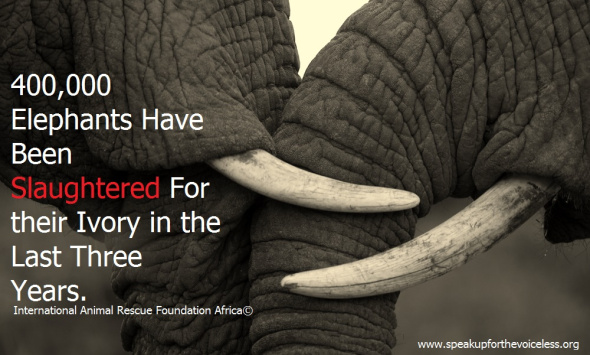
Since 2012 the External Affairs Investigations Unit (EAU), and International Animal Rescue Foundation (IARF), have unearthed a shocking trend of wildlife parts and tropical pet traders on the United States server platform of Facebook.
Operation Trojan Horse has been heading the ground-and-online hunt for traders then shutting them down via intelligence reports passed to the Police, Border Agencies and Internet Service Providers. The Intelligence gathering team state that Facebook is the new wildlife trading site whose technology conceals anything from pornography, murder, child abuse and in this case wildlife parts trade and the tropical pet trade.
Over the past several years we’ve seen a slow decline of wildlife-parts-traders and pet dealers as enforcement tightens around traders and smugglers bringing them to justice. Unfortunately, since as early as 2010 online trade has skyrocketed to new and worrying proportions. Traders intentionally use a textbook of keywords that fool Facebook’s bots and online surveillance teams, according to the External Affairs Unit [comprised of experts from ex-law enforcement officers, intelligence officers and computer experts.]
Investigative officer Tayah, who fronts the main online intelligence gathering team stated: “Firstly I begin by downloading a Virtual Private Network using pseudo details so that my location on G mail or Facebook cannot be traced. Then I have two options after signing up, creating a Facebook group or page. If say I wanted to create a group, I’d title the group using certain keywords to avoid Facebook’s bots and intelligence monitoring teams locating my network. From there I simply add trusted contacts and trade is on in under ten minutes. If I wanted to create a page, I’d again use set keywords and ensure that every country as possible remains banned from viewing the page. I then add say 50+ admins. Job done”.
Tayah makes it sound so easy but exposes a flaw: “Pages that use ‘country banning restrictions’ can still be located in the Facebook search bar. One just changes their Virtual Private Network (GPS) and you can locate anything from illegal porn, animal abuse, wildlife trading, pedophile rings down to dog fighting pages too”. Tayah went onto state: “Unless the user or anyone of the admins unpublished the Facebook page, intelligence gathering is then restricted to Facebook only. If Facebook administrators are unaware of these keywords or technology or are just lacking people power within the law-enforcement department then these ruthless traders will get away with anything”.
Working in conjunction with their Asian counterparts, IARF noticed most traders were deliberately concealing their video and image GPS as well. The problems don’t just end their either. Out of the 1.32 billion Facebook users, a staggering 32 per cent of users log in using a mobile device. One can turn the GPS off on a mobile device and download a Virtual Private Network. For all you know the friend your speaking to on Facebook that’s GPS states there from California in the United States, is really your best friend, wife, husband living with you or near you. That’s how lax Facebook’s online security is.
Tayah goes on to say “The fact I can access pages on Facebook using VPN software clearly shows Facebook is not as secure as it presents itself to be. While Facebook may have protected its millions of citizens, its allowed ruthless and very dangerous criminals to use the platform as a safe haven to buy, sell and trade in illegal animal parts, as well as children, which I’ve witnessed countless times from Russia to Karachi.”
A recent undercover survey uncovered traders selling Slow Loris within Thailand. Slow Loris are protected under Thai law and Cites law (see image below). Please click on all images to be taken to the real time evidence online. We’ve since filed the relevant reports for all and no longer require these images within our file. 
Image: ‘protected’ Slow Loris for sale on Facebook within a tropical pet group.
The trader (pictured above), is not bothered that the Slow Loris is protected under Thailand law. One species out of the five is listed as critically endangered while the remaining four remain listed as vulnerable. The tropical pet trade has been blamed on all five of the species gradually dwindling. Furthermore, Slow Loris despise being handled, brushed or kept as pets.
Slow Loris show a kind of not-bothered-look when being handled by humans. Unfortunately they cannot scream, like we do when tickled, brushed or bathed. Slow Loris hate being handled and do not make good pets. They are solitary creatures and also hate bright light. Yet Facebook has countless numbers of protected Slow Loris for sale, which is absurd, immoral and a slap in the face to conservationists and law enforcement. Is Facebook now above the law?
Facebook must be held accountable for this trade by implementing a ‘strict no wildlife or animal parts trade’ from species that are threatened within their terms and conditions. Should the United States platform not take the relevant actions then we may as well hang up our boots and go home. Frankly we’ve had enough of being ignored and fobbed off.
Endangered Tortoises can be located in many ‘Thai tropical pet and ivory’ trading Facebook forums. The image below depicts a Yellow Foot Tortoise, a species of reptile that isn’t endemic from the region of Thailand. Identified back in 1766 by Professor Carl von Linnaeus, the species is known as Chelonoidis denticulata classified as Vulnerable.
Image: Yellow Foot Tortoise are listed as vulnerable; Pet trade threatens their future.
Although not considered illegal to breed the species, EAU officers from Malaysia were mortified to know the breeder is importing the vulnerable species from South America. The unnamed breeder [not shown above], whom we cannot name, would not divulge how the tortoises are brought into the country but made it clear he could easily obtain more infants on demand, over the border from the wild.
Chelonoidis denticulata is an endangered species. The major populations located in South America are protected under the Convention on International Trade in Endangered Species, Appendix II. As with many species of Turtles and Tortoises, many Brazilian giant Tortoises end up as food items in local markets. This species of Tortoise is popular in the pet trade.
Despite the numerous specimens of endangered and nearing extinct tropical pets for sale on Facebook, one major concern is the illicit ivory trade. Back in 2013 IARF-Asia conducted a random survey within Thailand, aimed at active Facebook members of the public, both female and male from the ages of 16-21. 85% of respondents stated that they would not purchase, deal or trade in ivory and knew where ivory came from. The remaining 15% stated that they had traded, were trading or knew of relatives trading ivory and Rhinoceros horn.
We were skeptical to begin with because according to many third party reports, most whole tusks, or jewelry ivory sales appeared to be traded by adults rather than minors and teenagers. Researching Facebook from 2013 we not only discovered that Facebook was a hotbed for ivory sales - but the teenagers and minors whom IARF-Asia had questioned within Thailand were actively trading ivory online using Facebook. One trader, circled in red within the image below, brags he is trading ‘carved ivory’ within his shop, which later turned out to be his uncles shop (2013.)
Image: Ivory traders on Facebook 2013
Since re-examining the vast majority of respondents that originally stated they were not dealing with ivory, Facebook seems to have become a hotbed for ivory sales for figurines, pendents, amulets, down to large freshly carved tusks. IARF-Asia also noticed that since Thailand’s new leader, Prayuth Chan-ocha took over the country, ivory trade has increased to shocking levels.
Image: Ivory Facebook profile set up as an online trade shop
Most traders will open up a Facebook account using words such as ‘ivory, ivory carvings, ivory trade, authentic ivory,’ etc. They will post photographs of some of their best selling items and then leave the page, group or their profile open for the public to view. Although the account may appear inactive, the trader silently monitors his account very closely because these profiles are created as mini shops for customers to purchase ivory pendents, charms, bracelets or carved tusks.
We are not only pointing our finger at Thailand or Facebook alone, despite Facebook seemingly unaware these traders are selling freshly carved and re-worked ivory illegally. Click on the image below and you’ll be taken through a Facebook group that is selling anything from Tiger bone wine, Bear claws and of course - ivory, in Viet Nam - on the United States social media platform.
Image: Viet Nam wildlife trading group on Facebook.
Not only insulting Africa’s heritage, but as a smack in the face to conservationists and a punch in the eye to law enforcement, one trader poses with an ivory carved Rhinoceros statue (pictured below.) Facebook is considered to be one of the largest hubs for illegal animal-parts trades that the EAU has located in years. Between 2012 -2105, IARF’s enforcement teams located multiple thousands of illegal traders openly and illegally flaunting Rhino horn and ivory.
Image: Rhinoceros figurine carved from poached ivory for sale on Facebook.
Shocked and in disbelief at the new findings by IARF’s intelligence teams, we wonder where have we gone wrong. Back in 2013-2014 a massive online enforcement campaign took place bringing down sites trading in animal parts, while Internet Service Providers (ISP) and online buy and sell sites took the pledge to not allow such items on sale. Unfortunately this has pushed many into the secretive and ‘secure’ platform of Facebook.
While there is continued demand and sale for illegal wildlife and animal parts, somewhere on the African or Asian continent an Elephant will be in the cross hairs of a poacher. The illegally poached animal’s body parts will be trafficked from Africa to Asia, then from user to Facebook, to meet the ever increasing demand that is sadly taking the social media platform by storm.
Within the past three years the Convention on International Trade of Endangered Species (CITES), stated some 400,000 Elephants had been slaughtered on the African continent alone.
There have been numerous large seizures of ivory and convictions of persons involved. Some countries are burning stockpiles of ivory to send a clear message to poachers and traders but despite these actions, the ivory trade continues. China announced in June of last year that enforcement teams had seized a total of 270 kilograms of ivory and Rhinoceros horn. Yet despite such seizures the trade goes on in the face of the law and as Facebook seems non-to-bothered some of the 1.32 billion users are using the platform as a trade and sell site laughing in the face of enforcement and conservationists.
In another shocking Facebook find, a routine search of Japanese traders revealed peddlers openly selling African Elephant ivory online. The shop (listed below), is set up as a hobby shop which works old and new ivory, creating pendents and necklaces, etc. The Japanese shop’s ivory belongs to Elephants which were illegally slaughtered on the continent of Africa, along with some re-carved antique specimens, which therefore continues demand and the illegal poaching. Please click on the image below, which will direct you to the Japanese Facebook page.
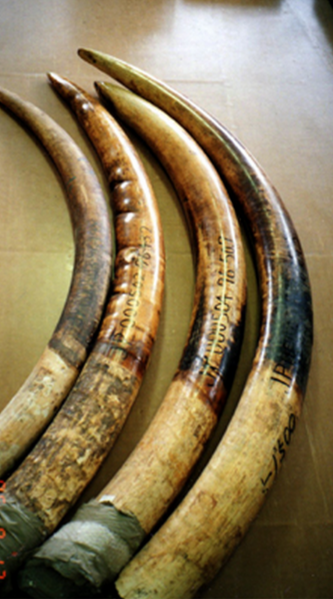 Image: African Elephant Ivory.
Image: African Elephant Ivory.
In April this year, Excellency Shinzo Abi was encouraged by major animal welfare organizations to cease trade in ivory and destroy any stockpiles being held in Japan. Since 1970, Japan has imported ivory from more than 250,000 African elephants, mainly from tusks that were illegally acquired through poaching wild elephants.
Japan has been granted permission twice to buy ivory, despite the UN Convention on International Trade in Endangered Species of Wild Fauna and Flora (CITES) 1989 ban on international commercial trade in African elephant ivory, which was adopted in response to the global elephant poaching crisis of the 1970s-80s.
In 1997, Japan secured CITES-approved ivory sales for nearly 50 tonnes of ivory from Zimbabwe, Botswana, and Namibia. In 2008, Japan was allowed to import a further 48 tonnes of ivory. Japan agreed to implement a domestic ivory control system that would prevent the laundering of illicit ivory, as a condition of both sales. This system has not worked, instead it has increased international demand for ivory and driven up poaching rates.
Of particular concern is the ivory “registration” program which can be used to grant legal status to illegal tusks or tusks of dubious legality. In the last four years alone, the Government of Japan has “registered” 5,600 tusks weighing more than 50 tonnes, bringing the total registered since 1995 to over 14,000 tusks, comprising 185 tonnes of ivory.
The “registration” of ivory tusks is a massive loophole that can be used to launder illegal ivory onto the Japanese market.
Read more here
Image: Japanese Ivory trader selling freely on Facebook.
The image below was posted among other groups from a man known as Mr Houng (power), who appears to communicate with a woman known as Miss Grace Chung, who we believe is from Osarka, Japan and runs various ivory carving shops (please click the image below to view groups). While the EAU team cannot provide any real data on these two individuals, they appear to be financially well off and have no problems at locating ivory. Miss Chung has three to four Facebook groups and various pages linked to Chinese ivory trading shops. Miss Chung is directly related to the Japanese ivory dealer and ‘alleged’ hobbyist above.
Mr Houng is seen communicating to Miss Chung within her alleged ‘ivory stone and wood workshop.’ The woman states “that’s a lot,” while other Facebook users display their ivory through images, throughout this group and a further group (which we have accessed but cannot disclose at this time.) All the ivory within the image below derives from 99% non-permitted ivory, meaning its illegal and has no permits whatsoever as investigated by the EIA.
The left hand image’s GPS is from China. We’ve checked various sources in relation to the right hand image and sadly there is not a trace that we can find. Based on Mr Houng’s monetary status, it is quite possible he knows exactly whom this ivory belongs too as he posted the photograph, which seems untraceable on all five of the top search engines. It would be wrong to accuse Miss Chung of any wrongdoing in relation to either image, however the image above derives from a Japanese Facebook ivory workshop which posts images of significantly high volumes of cut off ivory pieces.
Image: close to two tons of African Elephant ivory.
Some Facebook groups and pages also contain walrus ivory which isn’t illegal if the animal died naturally or you legally hunted the animal. The problem surrounding walrus ivory is that some traders of elephant ivory use walrus ivory as a smokescreen to sell elephant ivory online. Unless you are an ivory expert, it is difficult to distinguish the difference between elephant ivory and walrus ivory. Elephant ivory traders do their best to conceal their trade by either stating their part of a walrus ivory group and/or trade Elephant ivory into, or against walrus ivory, furthermore some online ivory dealers trade under the name of ‘ox-bone’. Only ivory experts can tell the difference. Can you tell the difference from the images above to the images below without Googling?
Image: walrus tusks
Even some of the best experts can at times fall prey to the walrus ivory trade - however there is a difference. Walrus tusk ivory comes from two modified upper canines and is known as a material, as morse. The tusks of a Pacific walrus may attain a length of one meter. Walrus teeth are also commercially carved and traded. The average walrus tooth has a rounded, irregular peg shape and is approximately 5 cm in length. Lets see whom can tell the difference or if there is a difference.
Poaching of protected or managed species, trafficking and the illegal trade in wildlife and their related parts and products has escalated into an international crisis in the last decade! Wildlife trafficking is both a critical conservation concern and a threat to global security, with significant effects on the national interest of the United States and the interests of our partners around the world. For every piece of ivory that is purchased the money from that ivory then makes its way back to terrorists.
Using money from illegal trade in wildlife and related parts and products, terrorists such as Al Shabab then commit atrocities such as filmed within the video below. These atrocities are funded exclusively by each person who purchases ivory. The more ivory bought and sold, the more it empowers terrorist activity.
The video included below provides a non-graphic but powerful account of how ivory sales and trade funds terrorism. Please do view the video and take into account all those innocent civilians that could be with us today. Sadly they’re not all due to ivory funded terrorism.
The current number of remaining African Elephants is not known, due to their large migratory behavior. We do know that in Central Africa all Elephant ‘populations’ are endangered. In Eastern Africa Elephant populations are listed as vulnerable. South African Elephant populations are listed as least-concern and finally, in Western Africa Elephant populations are listed as vulnerable. Please refer to the table contents below, lifted from the last revised summery.
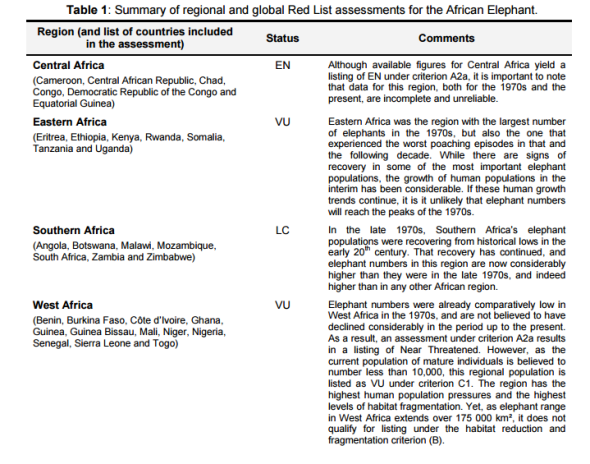 Image: table of assessments for the African Elephant
Image: table of assessments for the African Elephant
Whilst overlooking Viet Nam, CITES issued Thailand a direct warning in May, to quit the illegal ivory trade or CITES would impose immediate trade sanctions against the country. Why not Viet Nam, Japan or China?
Thailand ‘had’ until the end of March 2015 to take measures to shut down domestic trade in illegal elephant ivory or it will face trade sanctions under the Convention on the International Trade of Endangered Species (CITES), which met in Geneva last July. It must enact legislation to stem the trade of illegal African ivory in the country and implement a registration system for domestic ivory and ivory traders.
“WWF welcomes this decision and applauds the key role of the US delegation in holding Thailand accountable for their lack of progress since 2013 when it pledged to shut down its ivory market,” said Leigh Henry, WWF’s Senior Policy Advisor at the meeting. “Elephants across Africa and Asia are being slaughtered for ivory and illegal markets in countries like Thailand are allowing wildlife crime to flourish.”
Possible sanctions would impact Thailand’s trade in species covered by the convention, including ornamental plants, such as orchids, and reptile leather. Trade suspensions would, for example, prevent exports of orchids, which would result in a loss of more than $80.7 million in annual sales based on the 2013 value of this trade. The economic impact would be significant as the value of just some of Thailand’s CITES-listed export items was estimated at $157 million in 2012.
So we’ll now await for Cites response and if any trade sanctions will be imposed, IARF will also be calling on the same trade sanctions to be imposed on China, Japan and Viet Nam. After all the evidence is above for all and sundry to view - and this is just a mere 1% of evidence we hold on file of past and present illegal ivory trade.
Meanwhile a staggering ‘estimated’ one hundred Elephants are being slaughtered daily on the continent of Africa with some ten to fifteen killed a week in Asia. We plead with all our supporters 5.4 million of you, to demand Facebook now cleanses their server of all illegal ivory traders, shops, groups and individual buyers. We must continue to disrupt the trade, failing this we’ll never tackle the demand problem, and sadly Elephants will soon become nothing but a story or artifact within a dusty museum.
Thank you for reading.
I thank all members of the External Affairs Unit, International Animal Rescue Foundation Asia and the current operation leaders that have been fronting the online task force since 2010 known as #OperationTrojanHorse..
Dr Jose C. Depre
Chief Environmental Officer
Chief Executive Officer
Endangered Species Monday: Alouatta belzebul.
Endangered Species Monday: Alouatta belzebul
This Monday’s endangered species article from the (Endangered Species Watch Post) focuses on the Red Handed Howler Monkey of which is listing near to endangerment. (Image Red Handed Howler Monkey)
Generically identified as Alouatta belzebul back in 1766 by Professor Carl von Linnaeus (1707 – 10 January 1778), also known after his ennoblement as Carl von Linné was a Swedish botanist, physician, and zoologist, who laid the foundations for the modern biological naming scheme of binomial nomenclature.
Listed as vulnerable the species is endemic to Brazil (Alagoas, Maranhão, Pará, Paraíba, Pernambuco, Rio Grande do Norte, Sergipe and Tocantins). Populations are currently on the decline of which its very likely the species will be re-categorized as endangered within the next five years, if not sooner.
A. belzebul is said to be extremely common in some areas such as Marajó however is noted as rare within the Atlantic Forest portion of the range known as; Rio Grande do Norte, Alagoas, Paraíba and Pernambuco. Last survey census’s reported the species to be inhabiting at least ten isolated locations of which two hundred individuals remain in each plot.
International Animal Rescue Foundation Brazil have for the past three years been conducting surveys within the area will be submitted to the (IUCN). Furthermore the Environmental Protection Unit now re-based in Londrina are working with local communities, hunters and farmers within the A. belzebul range to preserve commonly known species of monkey, birds, amphibians and flora within the region.
IARFB are also currently conducting investigations to locate where sugar cane is being exported too and used within from the A. belzebul’s region. Its believed that America, Mexico, South America, and Europe are purchasing large sugarcane exports from the region. Tesco, J.S Sainsbury’s, Cooperative Food Group, Asda, Walmart, Woolworths and Spar have all been noted on suppliers exports from the regions. Aldi, Lidl, Quick-Save, Budgens have been ruled out. We are least impressed though with J.S Sainsbury’s name written on export documents of sugar cane from the region.
Within the ten isolated locations six populations are known to reside in Paraiba, two in Rio Grande de Norte, one in Pernambuco, and one in Alagoas. The largest population in the Atlantic Forest is in Pacatuba in Paraiba with about 80 animals. There have been five registered local extirpations from forest fragments in the last 50 years.
Little known conservation actions are under way within their endemic region and as explained populations are decreasing and nearing endangerment. A. belzebul is listed within the family of Atelidae which is one of the very first five of new recognized ‘new world monkeys’. Its quite likely that new sub-species of the Red Handed Howler Monkey may be located as well as newer species of ‘new world monkeys’ too within the coming years. Only five years ago did scientists locate over 100,000 new species within the Yasuni National Park, Ecuador so in reality anything is possible.
The Atelidae family host howler, spider, woolly and woolly spider monkeys (the latter being the largest of the New World monkeys). They are found throughout the forested regions of Central and South America, from Mexico to northern Argentina.
When the species is not foraging on the ground floor they can normally be found resting in the canopies of trees at a height of some sixty feet. Social groups normally consist of seven to twenty members that will host mature males, females juveniles and infants. Males normally take lead of the pack or (troop).
These large and slow-moving monkeys are the only folivores of the New World monkeys. Howlers eat mainly top canopy leaves, together with fruit, buds, flowers, and nuts. They need to be careful not to eat too many leaves of certain species in one sitting, as some contain toxins that can poison them. Howler monkeys are also known to occasionally raid birds’ nests and chicken coops and consume the eggs.
Image: Adult Red Handed Howler Monkey.
Howlers are the only New World primates which regularly include mature leaves in their diet, although softer, less fibrous, young leaves are preferred when they are available. Their folivory and ability to eat mature leaves is undoubtedly one of the keys to their wide distribution and the wide variety of vegetation types they inhabit.
Mature fruit is the other important food item, especially wild figs (Ficus) in many regions, but they also eat leaf petioles, buds, flowers (sometimes seasonally very important), seeds, moss, stems and twigs, and termitaria. The diet of two A. belzebul groups in the Caxiuanã National Forest was studied by Souza et al. (2002). They were largely folivorous but would switch to fruits whenever available, especially during the wet season.
Size:
Adult male weight 7.27 kg (n=27),
Adult female weight 5.52 kg (n=26)
Adult male weight 6.5-8.0 kg (mean 7.3 kg, n=27),
Adult female weight 4.85-6.2 kg (mean 5.5 kg, n=26) .
Threats
Listed on Cites Appendix II there are few threats associated with the species. Nevertheless they still remain and if left unchecked can rapidly increase placing the new world monkey in danger of extinction.
In the Amazon, the species is widespread, although they are hunted. The Amazon populations have suffered severely from forest loss throughout their range in southern Pará over the last decade. In the Atlantic Forest population, the major threat is the fragility of the remaining small forest patches to stochastic and demographic affects (habitat loss and fragmentation has been mainly due to sugar-cane plantations).
Please share and make aware the Red Handed Howler Monkey’s plight. Tip: Check sugar products from local shops and hypermarkets to ensure your not aiding the destruction of their natural habitat via your sugar purchase. Check your local candy and other shopping supplies. If necessary contact companies politely asking where they are obtaining the sugar products from. Never give up.
Thank you for reading.
Dr Jose C. Depre.
Environmental and Botanical Scientist.
Chief Executive Officer
Endangered Species Friday: Dyscophus antongilii
Endangered Species Friday: Dyscophus antongilii
This Friday’s endangered species article I focus on yet another Africans frog that is listing near endangerment. In fact this frog species is so threatened should conservation actions not improve we’re likely to see extinctions occur within the next decade. (Please note: the image above depicts the frog in threatened state - colors do differ)
Commonly known as the Tomato frog the species is one of three within the genus Dysophus. Scientifically identified as Dyscophus antongilii this particular genus is the only genus known to be at threatened status while the other two sub species are in fact listed as least concern.
Identified back in 1877 by Explorer Alfred Grandidier (20 December 1836 – 13 September 1921). Explorer Grandidier was a French naturalist and explorer. From a very wealthy family, at the age of 20, he and his brother, Ernest Grandidier (1833–1912), undertook a voyage around the world. At first they were led by the astronomer and physicist Pierre Jules César Janssen (1824–1907), but when Janssen fell sick and had to return to France after about six months, the brothers continued the journey.
They visited South America in 1858 and 1859 and in particular the Andes, Peru, Chile, Bolivia, Argentina and Brazil. During this voyage they gathered a significant collection of specimens which were analyzed, in 1860, by Ernest.
Conservation actions did improve the species back in the late 1990’s of which the D. antongilii was then listed as vulnerable. Since this time though conservation actions have improved to some degree leading to the species to then be re-listed back in 2002 as (near threatened). Unfortunately due to this particular genus being only native to the Africans island of Madagascar where habitat fragmentation, destruction, urbanization, species/human displacement, slash and burn operations are increasing only reduces frog habitat furthermore. Main causes of declines though are trade and pollution of water bodies.
D. antongilii is known to be abundant, however populations of this particular genus are currently unknown on the island. Locals have stated D. antongilii is most commonly seen within the Maroansetra region on the island of Madagascar. Unfortunately when environmentalists undertook surveys and census counts within the area with regards to the locals knowledge of the species, it was found that populations are actually declining quite rapidly. One such problem that has been noted by International Animal Rescue Foundation Africa was the increasing tropical pet trade.
International Animal Rescue Foundation Africa and International Animal Rescue Foundation England located a broad range of pet suppliers within England and America. Despite D. antongilii classified as “near threatened” and in overall decline one can purchase this exact genus within the United States for as little as $29.99. Meanwhile within the counties of Manchester, Nottingham, London, Kent and Wales pet suppliers were trading for around £30.99.
On researching a pet supplier within the United States not only did we locate evidence of D. antongili on sale, other species of threatened and “endangered” animals were also on sale. A search of their Facebook social media page also aroused suspicions of which they have since closed down. Pet Solutions, Beavercreek based in Ohio can be located here: http://www.petsolutions.com/C/Live-Frogs/I/Tomato-Frog.aspx meanwhile their Twitter account can be viewed hereto: https://twitter.com/petsolutions
Image: Tomato frog in normal relaxed mode shows their unique tomato coloring.
The species lives in primary rain-forest, coastal forest, secondary vegetation, degraded scrub, and highly disturbed urban areas. It is a very adaptable species, but possible declines in Maroansetra indicate that there might be a limit to the extent that it can persist in urbanized habitats. It appears to be localized to sandy ground near the coast, and breeds in ditches, flooded areas, swamps, and temporary and permanent still or very slowly flowing water.
Tomato frogs breed in February to March following heavy rainfall; the sounds of males calling to attract females can be heard around small water bodies in the dark Malagasy night. Following copulation, females will lay a clutch of 1,000 to 15,000 eggs on the surface of the water. Tadpoles hatch from these small black and white eggs about 36 hours later; they are only around six millimetres long and feed by filter-feeding. Tadpoles undergo metamorphosis into yellow juveniles and this stage is completed around 45 days after the eggs were laid.
Ambushing potential prey, adult tomato frogs feed on small invertebrates, such as beetles, mosquitoes, and flies. When threatened, these frogs can inflate themselves, giving the appearance of greater size.
Threats
Pollution of water-bodies is a potential threat, and in the past this species was subject to collection for international trade, although this is now largely under control and restricted. Despite trade allegedly being restricted - it seems this is not the case as International Animal Rescue Foundation Africa have located over 34 suppliers in the last week, many of which have ties back to Asia and Africa. International trade is indeed taking off again, and with a population in decline - international trade must cease immediately.
This colorful species is much in demand by herpetological hobbyists. Captive breeding, in addition to CITES listing, has effectively halted the trade in wild-caught specimens. However it must be noted that captive breeding cannot always be proven within the private industry, and scrutiny must always be used to conclude if any breeder is following the relevant procedures and laws in place.
Research into captive breeding techniques for the tomato frog has been carried out by Baltimore Zoo in the United States in an effort to boost the currently small and genetically deprived captive population that exists in that country.
A consortium of U.S. zoos that form the Madagascar Fauna Group (MFG) have established an exhibit at the Parc Zoologique Ivoloina, Madagascar in an attempt to help educate local people about this attractive member of their natural heritage. Very little is known about the tomato frog and further research into its distribution, behavior and potential threats is urgently needed before effective conservation measures can be put into place.
It is currently listed on Appendix I of the Convention on International Trade in Endangered Species (CITES), but this move has been criticized by some authors as an ineffective strategy and one that has undermined the status of the unlisted D. guineti. Furthermore, research is needed to determine if D. antongilii is in fact a separate species or merely a variant of D. guineti.
Thank you for reading and taking the time to educate yourself and others about this amazing reptile.
Dr Jose C. Depre
Chief Environmental Officer/ CEO
Botanical and Environmental Scientist.

